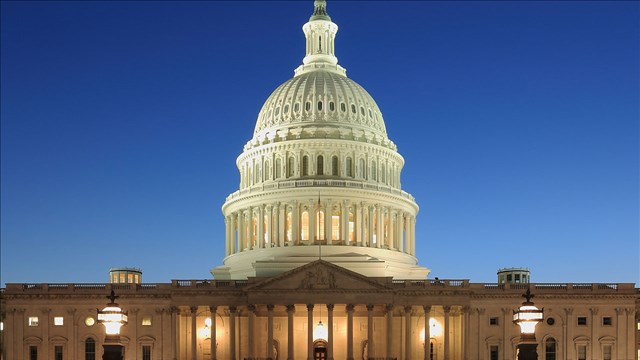This article provides an overview of employers’ obligations under the new Coronavirus Covid-19 Law, Families First Coronavirus Response Act.
Last night, President Trump signed the Families First Coronavirus Response Act, which will go into effect in 15 days, April 2. The bill provides paid leave to employees forced to miss work due to Covid-19 under two provisions: emergency expansion of the Emergency Family Medical Leave Act and a new federal paid sick leave law.
THE EMERGENCY FAMILY MEDICAL LEAVE ACT
The Emergency FMLA applies to all employers with less than 500 employees. However, the Secretary of Labor may exclude healthcare providers and emergency responders, and to exempt small businesses with fewer than 50 employees if the required leave would jeopardize the viability of their business. Any individual employed by the employer for at least 30 days (before the first day of leave) may take up to 12 weeks of job-protected leave to allow an employee, who is unable to work or telework, to care for the employee’s child (under 18 years of age) if the child’s school or place of care is closed or the childcare provider is unavailable due to a public health emergency. The first 10 days may be unpaid. After the 10-day period, the employer generally must pay full-time employees at two-thirds the employee’s regular rate for the number of hours the employee would otherwise be normally scheduled. The new Act now limits this pay entitlement to $200 per day and $10,000 in the aggregate per employee. Employees who work a part-time or irregular schedule are entitled to be paid based on the average number of hours the employee worked for the six months prior to taking Emergency FMLA. Employees who have worked for less than six months prior to leave are entitled to the employee’s reasonable expectation at hiring of the average number of hours the employee would normally be scheduled to work.
Employers with 25 or more employees will have the same obligation as under traditional FMLA to return any employee who has taken Emergency FMLA to the same or equivalent position upon the return to work. However, employers with fewer than 25 employees are generally excluded from this requirement if the employee’s position no longer exists following the Emergency FMLA leave due to an economic downtown or other circumstances caused by a public health emergency during the period of Emergency FMLA. This exclusion is subject to the employer making reasonable attempts to return the employee to an equivalent position and requires an employer to make efforts to return the employee to work for up to a year following the employee’s leave.
THE EMERGENCY PAID SICK LEAVE ACT
The Emergency Paid Sick Leave Act provides that employers with fewer than 500 employees to provide full-time employees (regardless of the employee’s duration of employment prior to leave) with 80 hours of paid sick leave at the employee’s regular rate (or two-thirds the employee’s regular rate to care for qualifying reasons 4, 5, or 6 listed above). There is an exception for employers who are healthcare providers or emergency responders at their election. Paid sick leave wages are limited to $511 per day up to $5,110 total per employee for their own use and to $200 per day up to $2,000 total to care for others and any other substantially similar condition. This paid sick leave will not carry over to the following year and may be in addition to any paid sick leave currently provided by employers. Employees who work a part-time or irregular schedule are entitled to be paid based on the average number of hours the employee worked for the six months prior to taking paid sick leave. Employees who have worked for less than six months prior to leave are entitled to the average number of hours the employee would normally be scheduled to work over a two-week period. A business employing fewer than 500 employees is required, at the request of the employee, to pay a full-time employee for 80 hours of mandated emergency paid sick leave instead of the initial 10 days of unpaid leave permitted by the Emergency Family and Medical Leave Expansion Act (summarized above).
EMERGENCY UNEMPLOYMENT INSURANCE STABILIZATION AND ACCESS ACT OF 2020
This section provides $1 billion in 2020 for emergency grants to states for activities related to unemployment insurance benefit processing and payment, under certain conditions.
Half of the resources are to be allocated to provide immediate funding to all states for administrative costs so long as they meet some basic requirements, including: (1) requiring employers to provide notification of the availability of unemployment compensation at the time of separation; (2) ensuring applications for unemployment compensation and assistance with the application process are accessible in at least two ways (in-person, by phone, or online); and (3) notifying applicants when their application is received and being processed, as well as providing information about how to ensure successful processing if the application cannot be processed.
The other half would be reserved for emergency grants to states which experience an increase of unemployment compensation claims of at least 10% in comparison to the same quarter in the prior calendar year. Those states would be eligible to receive an additional grant to assist with costs related to such an unemployment spike if they meet additional requirements, including: (1) expressing of commitment to maintain and strengthen access to unemployment compensation; and (2) taking or planning to take steps to ease eligibility requirements and access (like waiving work search requirements and the waiting period). The Act will provide those states that meet these requirements with 100 percent federal funding to provide extended unemployment benefits, up to an additional 26 weeks after the initial 26 weeks (i.e. up to 52 weeks of benefits). Previously, states were required to pay 50% of extended unemployment benefits. This provision will also remain in effect until December 31, 2020.
TAX CREDITS FOR PAID SICK AND PAID FAMILY MEDICAL LEAVE
This section provides a series of refundable tax credits for employers who are required to provide the Emergency Paid Sick Leave and Emergency Paid Family and Medical Leave described above. These tax credits are allowed against the employer portion of Social Security taxes. While this limits application of the tax credit, employers will be reimbursed if their costs for qualified sick leave or qualified family leave wages exceed the taxes they would owe.
Specifically, employers are entitled to a refundable tax credit equal to 100% of the qualified sick leave wages paid by employers for each calendar quarter in adherence with the Emergency Paid Sick Leave Act. The qualified sick leave wages are capped at $511 per day ($200 per day if the leave is for caring for a family member or child) for up to 10 days per employee in each calendar quarter.
Similarly, employers are entitled to a refundable tax credit equal to 100% of the qualified family leave wages paid by employers for each calendar quarter in accordance with the Emergency Family and Medical Leave Expansion Act. The qualified family leave wages are capped at $200 per day for each individual up to $10,000 total per calendar quarter. Only those employers who are required to offer Emergency FMLA and Emergency Paid Sick Leave may receive these credits.
COVERAGE FOR TESTING FOR COVID-19
This section requires private health plans (including insured, self-insured, and grandfathered) to provide coverage for COVID-19 diagnostic testing and related services to employees and their covered dependents, without cost sharing (like deductibles, copayments and coinsurance) from enactment of the Act through the end of the national emergency period.
Covered services and related cost waivers apply to diagnostic testing, healthcare provider services (in-person and telehealth), and facility costs (physician office, urgent care center and emergency room) to the extent the costs are related to evaluating the need for, or furnishing, COVID-19 diagnosis and treatment. In addition to coverage and cost waiver provisions, plans shall not require prior authorization or similar medical management requirements as a precondition of COVID-19 testing or services.
Please contact us if you need assistance understanding your obligations.








